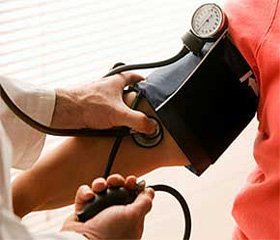Журнал «Боль. Суставы. Позвоночник» 2 (18) 2015
Вернуться к номеру
Pain Syndrome n Postmenopausal Women with Osteoarthritis, Combined with Essential Hypertension
Авторы: Povoroznyuk V.V., Nishkumay O.I., Nekrasova N.B. - Institute of Gerontology named after D.F. Chebotarev AMS Ukraine, Ukrainian Scientific-Medical Centre for the Problems of Osteoporosis, Kyiv, Ukraine
Рубрики: Ревматология, Травматология и ортопедия
Разделы: Медицинские форумы
Версия для печати
Статья опубликована на с. 95
The aim of the research is to conduct a comparative assessment of pain in women with osteoarthritis in combination with hypertension.
Materials and methods. 31 postmenopausal women (average age 61.1 ± 1.2 years, menopause duration 5.4 ± ± 2.2 years) were examined. All respondents were divided into two groups: group I comprised 13 patients diagnosed with osteoarthritis (gonarthritis) Roentgen phase II according to classification of Kellgren & Lawrence (1957), group II comprised 18 patients with gonarthritis of stage II in combination with hypertension of the second degree. Pain syndrome was assessed with the usage of verbal analogue scale (VAS) and the scale of WOMAC. All patients were taken Ultrasound densitometry (BUA, SOS, stiffness index, T–score) with the Lunar Achilles device (Lunar Corporation, Madison, Wisc., USA). Laboratory data included total serum calcium, PTH, vitamin D.
Results. All women surveyed revealed osteopenia, the severity of which is not dependent on the degree of hypertension. Pain intensity on VAS was significantly higher in patients with osteoarthritis, combined with hypertension compared to patients with osteoarthritis (60.1 ± ± 2.3 mm and 51.2 ± 1.2 mm respectively, p < 0.05). Evaluation of functional impairment score WOMAC revealed significantly greater stiffness in patients with co morbidity compared with osteoarthritis (70.3 ± 3.2 and 52.5 ± 2.1 respectively, p < 0.05). Also the greatest severity of functional impairment observed in group II compared with the first group (60.5 ± 1.2 and 52.5 ± 2.1 respectively, p < 0.05). Patients of group II were identified to have secondary hyperparathyroidism and vitamin D deficiency (21.99 ± 1.20 nmol/l) probably caused by the D–hormone–deficiency taking into consideration the increases in serum creatinine and decreased creatinine clearance in this group.
Conclusion. Thus, the more intense the pain and functional impairment in patients of group II were seen against the background of the identified secondary hyperparathyroidism and vitamin D deficiency probably caused by the D–hormone–deficiency taking into consideration the increase in serum creatinine and decreased creatinine clearance in this group. Secondary hyperparathyroidism enhances bone resorption and exacerbates pain due to the development of osteomalacia. It indicates the necessity to use the active metabolite of vitamin D (alfacalcidol) to correct the violations.

